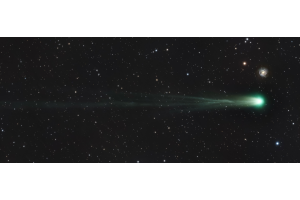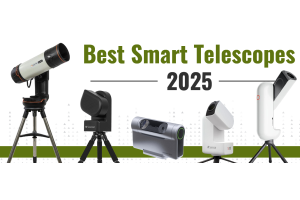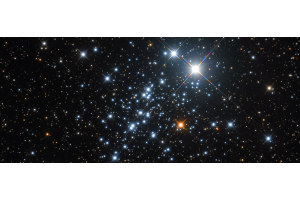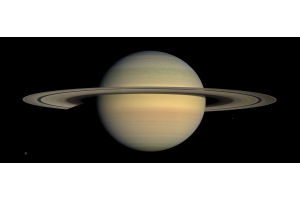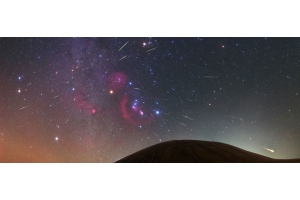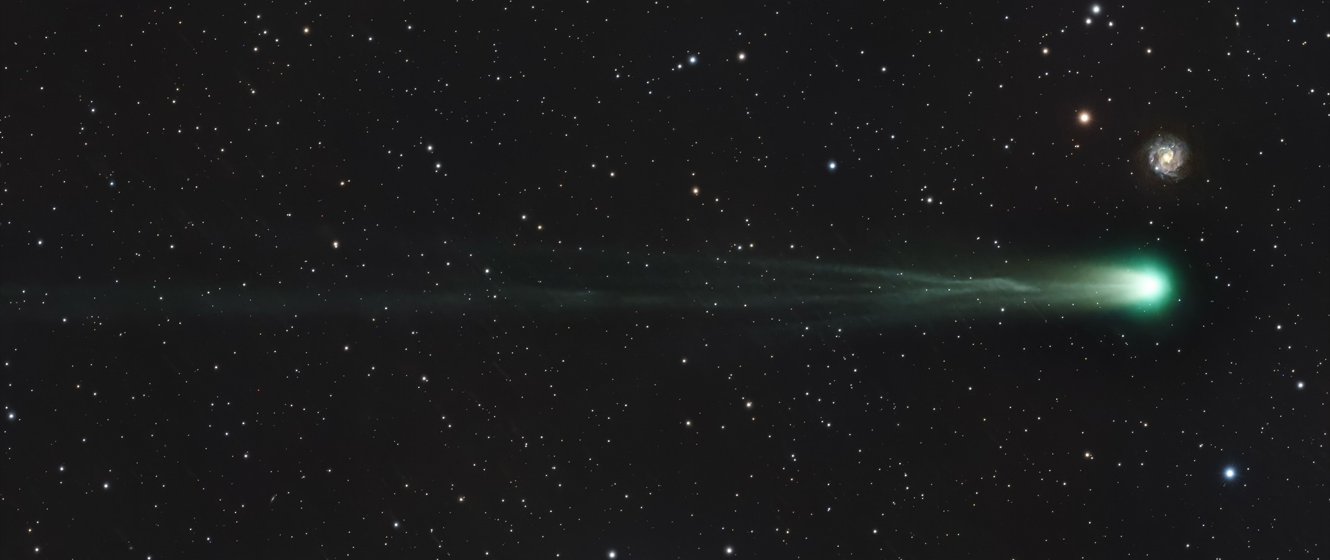
Banner Image: @confusedflatearther on Instagram
Stargazers will rejoice to hear that not just one, but two comets are visible in the sky in the month of October. There’s 5th magnitude (and brightening) Comet C/2025 A6 (Lemmon) that will be visible during its flyby of Earth on October 21st, and there’s Comet C/2025 R2 (SWAN) that is peaking around October 13th but will be visible for the rest of October. Both comets are visible in dark skies with just a pair of binoculars, but are even better to see in a telescope and are ideal targets for beginner stargazers this Fall.
Spotting Comet C/2025 A6 (Lemmon)
The most impressive comet of the pair is quickly brightening up as it begins its close approach to Earth. Comet C/2025 A6 Lemmon was discovered in January shining at an incredibly faint magnitude +21.5. Since then, it has brightened to +5.7 ~ nearly 2 million times brighter than its discovery. This is to be expected as the comet quickly hurls inwards to the Sun and begins to display the classic coma commonly associated with comets. This makes it just barely visible to the naked eye from a dark sky location already. However, it is expected the comet will continue to brighten throughout the month and will get as bright as magnitude +3 in the last two weeks of October. This will make the comet undoubtedly the brightest comet of the year thus far and will be a great binocular target for astronomers.
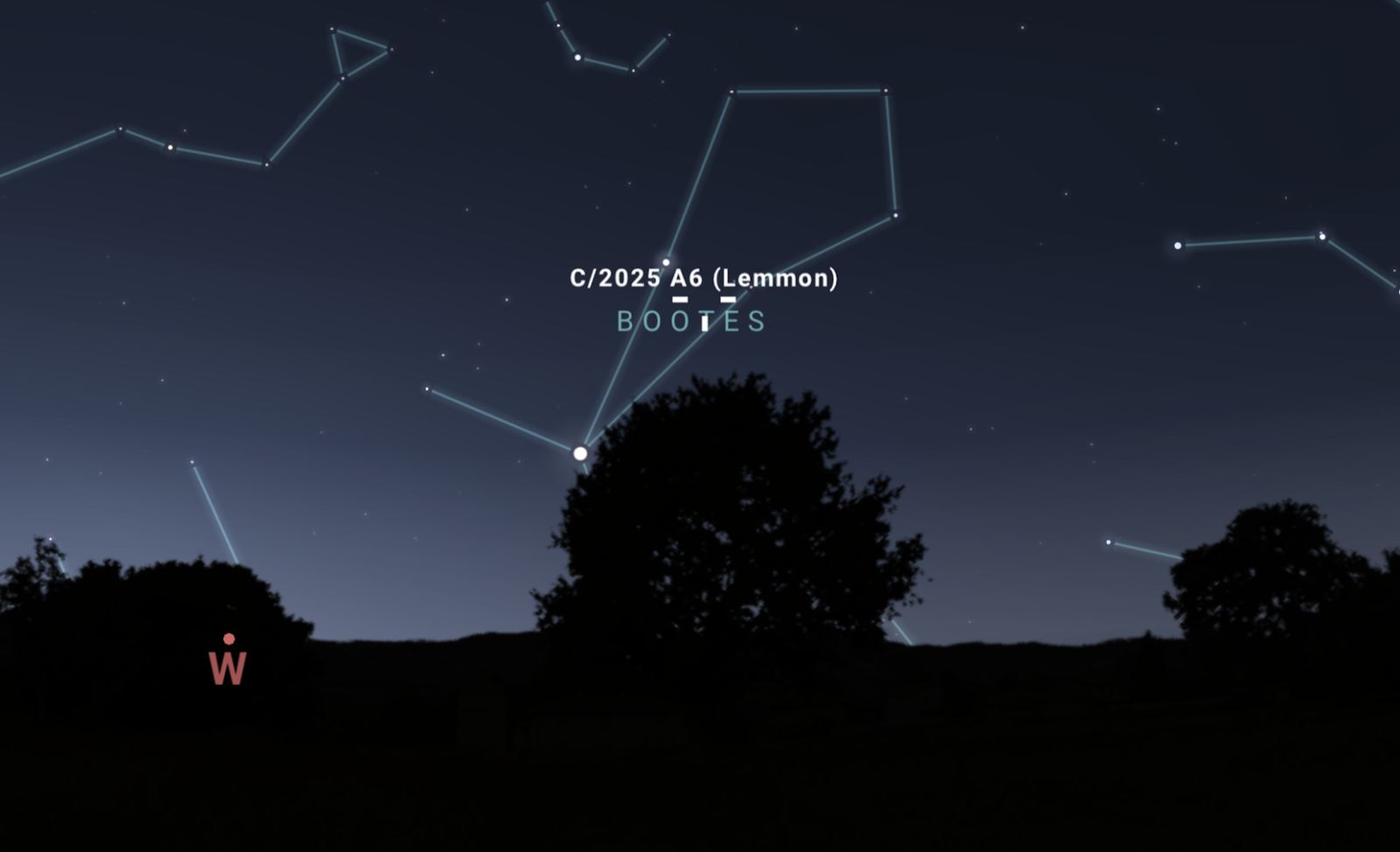 (Position of Comet C/2025 A6 (Lemmon) on the evening of October 21st. The comet will be visible lowly on the horizon after sunset. Credit: Stellarium Web)
Click to Enlarge Image
(Position of Comet C/2025 A6 (Lemmon) on the evening of October 21st. The comet will be visible lowly on the horizon after sunset. Credit: Stellarium Web)
Click to Enlarge Image
Presently, as of October 13th, the comet is near the constellation of Ursa Major heading towards Canes Venatici. In the northern hemisphere, that means the comet is only really visible in the early morning hours as these are Spring constellations. The comet will rapidly move towards the constellation of Bootes as it makes its closest approach to Earth on October 21st, visible in the evening hours after sunset. On October 21st, the comet will be at its brightest and easiest to spot. Right now the comet is ill suited to be observed due to the presence of the waning gibbous Moon. However, as the moon approaches the new phase, the skies will be dark on closest approach. This timing with the new moon makes this comet all the better to observe.
Spotting Comet C/2025 R2 (SWAN)
Joining Comet Lemmon in the night sky this month is also fainter Comet C/2025R2 (SWAN). This comet was discovered on September 11th, 2025 at a magnitude 7.4, a fairly late detection as far as comets go. The comet was not spotted earlier due to its close proximity in the sky to the Sun. Since then, the comet has undergone an outburst and now shines at a relatively faint magnitude +6.1 as it makes its closest approach to Earth at 0.3 AU. This week will be the best week to observe the comet.
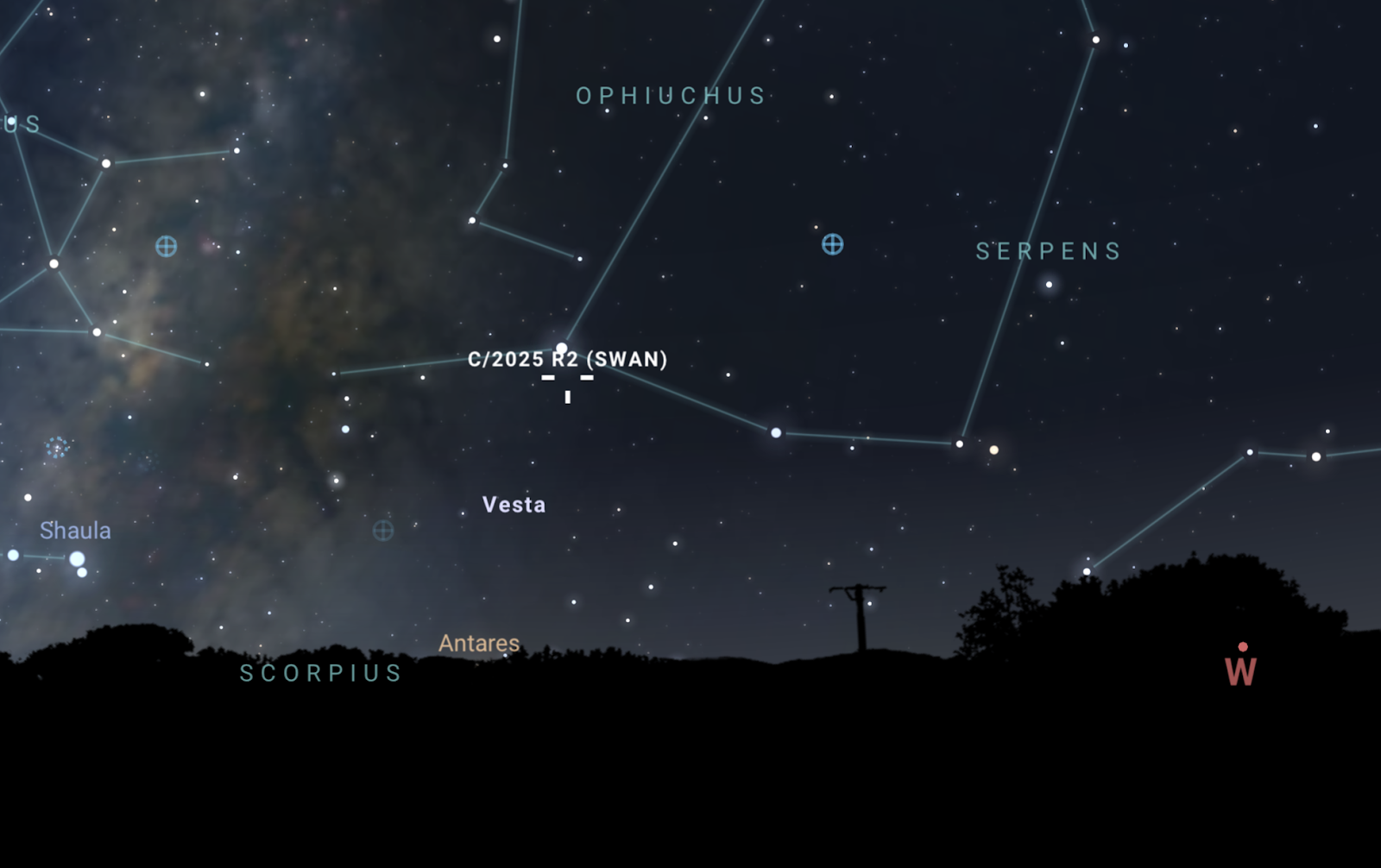 (Position of Comet SWAN on the evening of October 13th. The comet will be visible lowly on the horizon after sunset. Credit: Stellarium Web)
Click to Enlarge Image
(Position of Comet SWAN on the evening of October 13th. The comet will be visible lowly on the horizon after sunset. Credit: Stellarium Web)
Click to Enlarge Image
To find the comet, look for the constellation Serpens not far from the heart of the Milky Way. It may be a challenge to find the comet from a dark sky site due to the incredible number of stars and globular clusters visible in this part of the night sky. It will not be far from the asteroid Vesta, as a matter of fact, on the evening of October 13th, and will make a very close pass to the star Sabik. On the evening of October 15th, the comet will be very close to the star Xi Serpentis and the two will be visible next to one another with a telescope at a modestly low power.
Equipment and Techniques
When observing comets like C/2025 A6 (Lemmon) and C/2025 R2 (SWAN), it’s best to use equipment that offers a wide field of view and lower magnification. Unlike stars or planets, comets often have diffuse comas and long, faint tails that can span a significant portion of the sky. Lower magnification helps capture more of the comet’s structure in a single view, making it easier to appreciate their full appearance.
Binoculars are an excellent tool for beginner and seasoned stargazers alike. A recommended option is the Celestron 7x50 Cometron binoculars, which are designed specifically for wide-field night sky viewing. They offer a generous 7-degree field of view and a large 50mm aperture—ideal for gathering the faint light of these icy visitors. These binoculars are lightweight, easy to use without a tripod, and perfect for sweeping across the sky to locate comets like Lemmon and SWAN.
If using a telescope, choose an eyepiece that gives a lower magnification (around 25x to 50x). This will help reveal more of the comet’s extended features, especially in the case of Comet Lemmon, which may develop a more prominent tail as it brightens in late October.
Note: While visualizations may suggest a bright and obvious object, keep in mind that comets typically appear as faint, fuzzy patches, even under dark skies.
To improve your chances of seeing either comet:
- Find a dark sky location, far from city lights.
- Let your eyes adapt to the darkness for at least 20 minutes.
- Use a stargazing app or star chart to help locate the comets near their associated constellations.
If you own a ZWO Seestar S50 Smart Telescope, now is the perfect time to put it to use. With both Comet C/2025 A6 (Lemmon) and Comet C/2025 R2 (SWAN) visible this month, the Seestar’s quick setup makes it ideal for capturing these fleeting celestial visitors before they sink into the Sun’s glare later in the season. Its 250mm focal length offers an excellent balance between field of view and image detail—wide enough to frame the full comet and tail, yet still capable of revealing intricate structures within the coma.
One of the Seestar's standout features is live stacking, which greatly improves image quality by boosting the signal-to-noise ratio. By combining multiple short exposures in real time, live stacking helps bring out fine details in the comet’s gas and dust tails—especially useful for relatively faint comets like SWAN, or for highlighting the structure of Lemmon as it brightens in mid-to-late October.
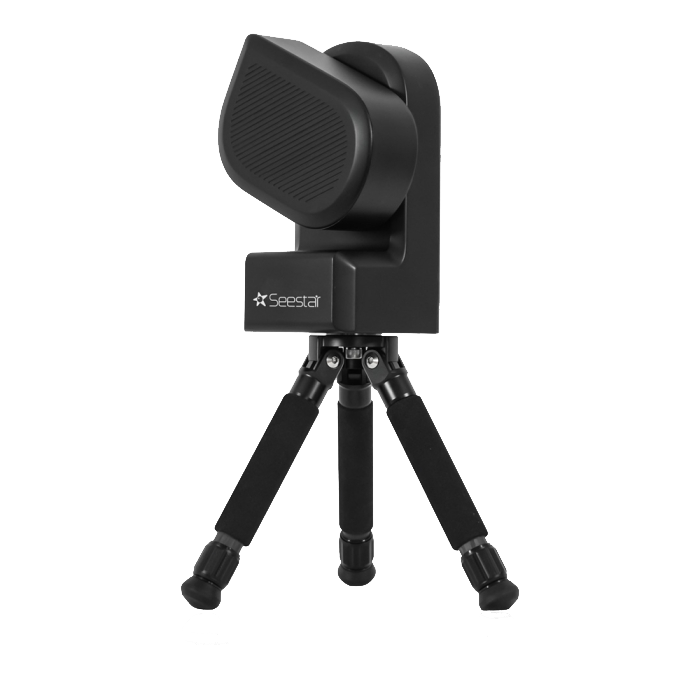
Astrophotography Tips
Comets are among the most exciting—and challenging—objects to photograph. Timing and preparation are key. For best results, use a color astronomy camera or a DSLR/mirrorless camera you can quickly set up and align. Because comets move against the background stars, both equatorial and alt-azimuth mounts with tracking can be used, though your exposure times will still be limited. Always use a sturdy tripod and a remote shutter release to avoid shaking the camera.
If you're shooting with a DSLR or mirrorless camera, a 100–200mm lens is a great starting point. Set your camera to manual ("M") mode to have full control over settings. Begin by focusing on a bright star or the Moon using your camera’s live view, then carefully frame the comet. Start with exposures between 15 to 30 seconds—longer exposures will show trailing, as the comet itself is moving. Capture as many frames as possible before either comet dips below the horizon or fades into twilight.

Learn More
Interested in diving deeper into the world of astronomy? Check out our AstronomyHub for a wealth of articles, guides, local resources for planetariums and observatories near you, and more to enhance your stargazing experience.






